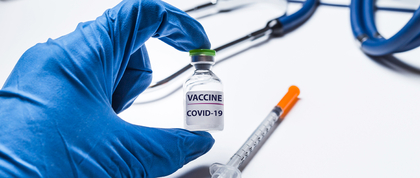
Vaccines are arguably one of the most important public health advances, leading to the eradication of smallpox, the potential control of 26 other diseases, and a population-wide benefit of “herd immunity.”
The development of vaccines against COVID-19 was accelerated by Operation Warp Speed, which is poised to rapidly distribute them in volume to all points across America. Dr. Moncef Slaoui and his partner, U.S. Army General Gustave Perna, have done a masterful job in coordinating joint ventures and nonprofit alliances with pharmaceutical companies, managing the huge risks in developing candidates.
The science behind them is nothing less than extraordinary. These vaccines are truly remarkable, and their ability to induce immune responses is striking. Data published recently in the New England Journal of Medicine, Nature, Lancet, Cell, and in press releases transparently show their development. The lack of adverse events in human trials is encouraging and, to date, they are remarkably safe.
As public health leaders, we now need to convince those with vaccine hesitancy that it is critical to obtain coronavirus vaccinations at the first opportunity they become available.
The Covid-19 virus uses a Spike protein that is found in respiratory cells and provides a viral “Achilles heel,” so that neutralizing antibodies to the Spike’s receptor interferes with the spread of disease.
Most vaccines are inactivated viruses or attenuated live viruses requiring years of development and testing. But since the posting of the complete genomic sequence in January, scientists have focused on the Spike protein for therapeutics and vaccines.
BioNTech and Pfizer have partnered to isolate a messenger RNA sequence of the Spike protein and encapsulate it in lipid nanoparticles. This “vaccine” is novel since there have been few instances in medicine where RNA may be injected to produce proteins.
The Phase 1 human trial was conducted at NYU Langone by Dr. Mark Mulligan and his colleagues. The results were promising enough that a Phase 3 study achieved 94% efficacy, consistent across age, gender, race and ethnicity. The data are to be presented to the FDA for approval on December 10th.
Moderna partnered with the NIAID Vaccine Research Center and also developed an mRNA vaccine for the full Spike protein. A Phase 2 trial at Emory University and Washington Kaiser Permanente will be followed for 12 months. Their phase 3 trial reported that the candidate vaccine was safe and well-tolerated, and noted a vaccine efficacy of 94.5%. These data have been presented to the FDA for emergency approval on December 17th.
The University of Oxford partnered with AstraZeneca to test a vaccine whose Phase 3 trial was complicated since it combined two studies. Another Phase 3 trial is being conducted with 30,000 participants at 80 sites across the U.S. in coordination with the National Institute of Allergy and Infectious Disease. This vaccine can be stored for up to 6 months and costs just a fraction per dose, compared to the other two leading vaccines in development.
Johnson and Johnson is working with Janssen to develop a COVID-19 vaccine that has already entered a Phase 3 trial. Janssen uses a technology platform carrying numerous Spike protein formulations, a variation of which has been used safely in Ebola preventive vaccinations in over 60,000 persons.
Merck converted its platform for the Spike protein gene into a vaccine candidate developed in their lab in the Brooklyn Army Terminal. Their viral platform was also used to develop an Ebola vaccine five years ago. Its advantage is the need for only a single dose.
Merck also acquired a Viennese company that has inserted the Spike protein into an attenuated measles virus, which could be a second approach. That company developed a vaccine active against Chikungunya, a mosquito-borne viral disease that causes fever and debilitating joint pain.
Novavax has grown a coronaviral Spike protein expressed and purified as nanoparticles that are administered with an extraction from the Chilean soapbark tree. Phase 3 trials are underway in the United Kingdom (15,000 participants), along with a second trial with 30,000 participants in the U.S. and Mexico.
Sanofi, in partnership with GlaxoSmithKline, is also developing a protein vaccine.
In conclusion, Dr. Anthony Fauci, with whom I worked when we were both at NIH in the 1980’s, has said that to make this pandemic history, 75 percent of the American public must be vaccinated. No doubt, this global vaccine distribution effort will be one for the record books and will be studied -- both for its successes and failures -- for decades to come.

William Rom, MD, MPH
GPH Research Scientist